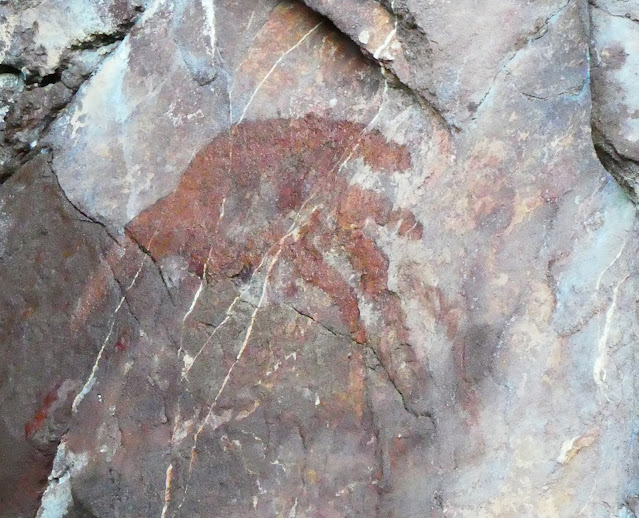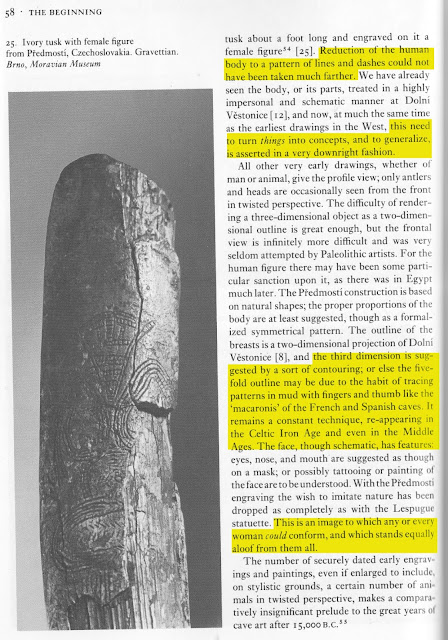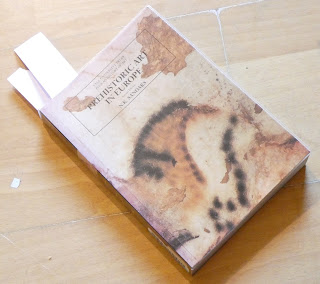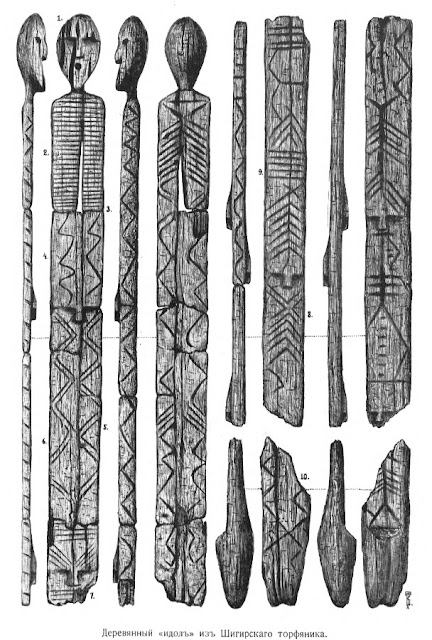New Ancient Cave Art

While this week has proved to be the most harrowing I've ever faced to date, yesterday I still managed to find time to sneak in a flying trip to Auchmithie on the coast to capture a piece of very impromptu 'cave art': The whole operation took no more than 20 minutes, including actually finding a suitable cave spot on the beach (luckily the tide was out, as I hadn't had time to check beforehand). The painting, intended to resemble the ancient red ochre tradition, was simply ground sandstone powder ( prepared in a previous post ) applied with a wet brush (and finger) and, I think, looks actually OK. The painting is designed to resemble the head of the raven god Hrefni, who is lord of storms, and is therefore an invocation to him by fishermen for calm seas: As I forgot my sketchbook with the full-length figure of Hrefni and his shaman's drum, I would like to revisit the caves at Auchmithie and spend longer realising another piece of prehistoric cave art, which can th...



